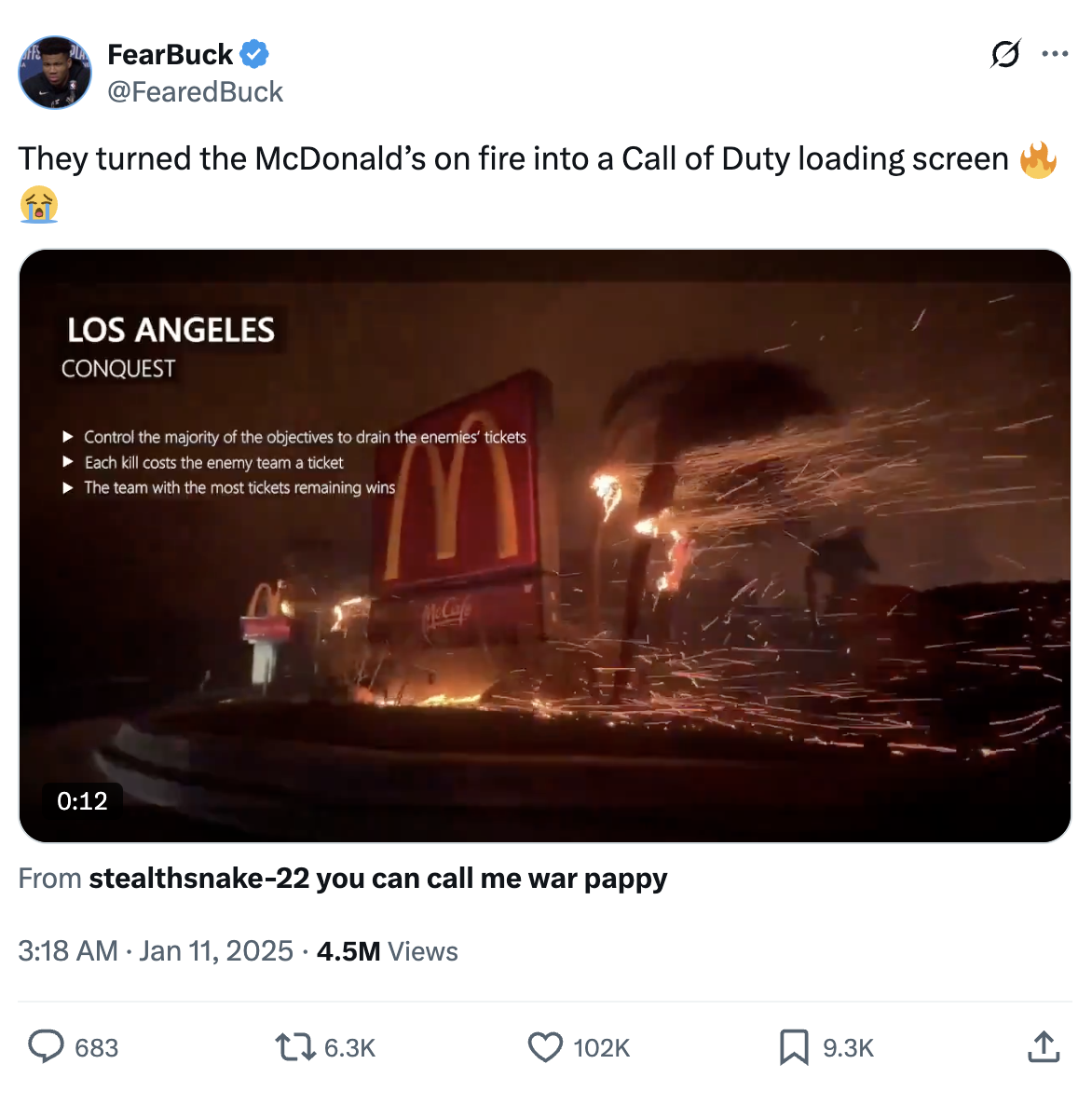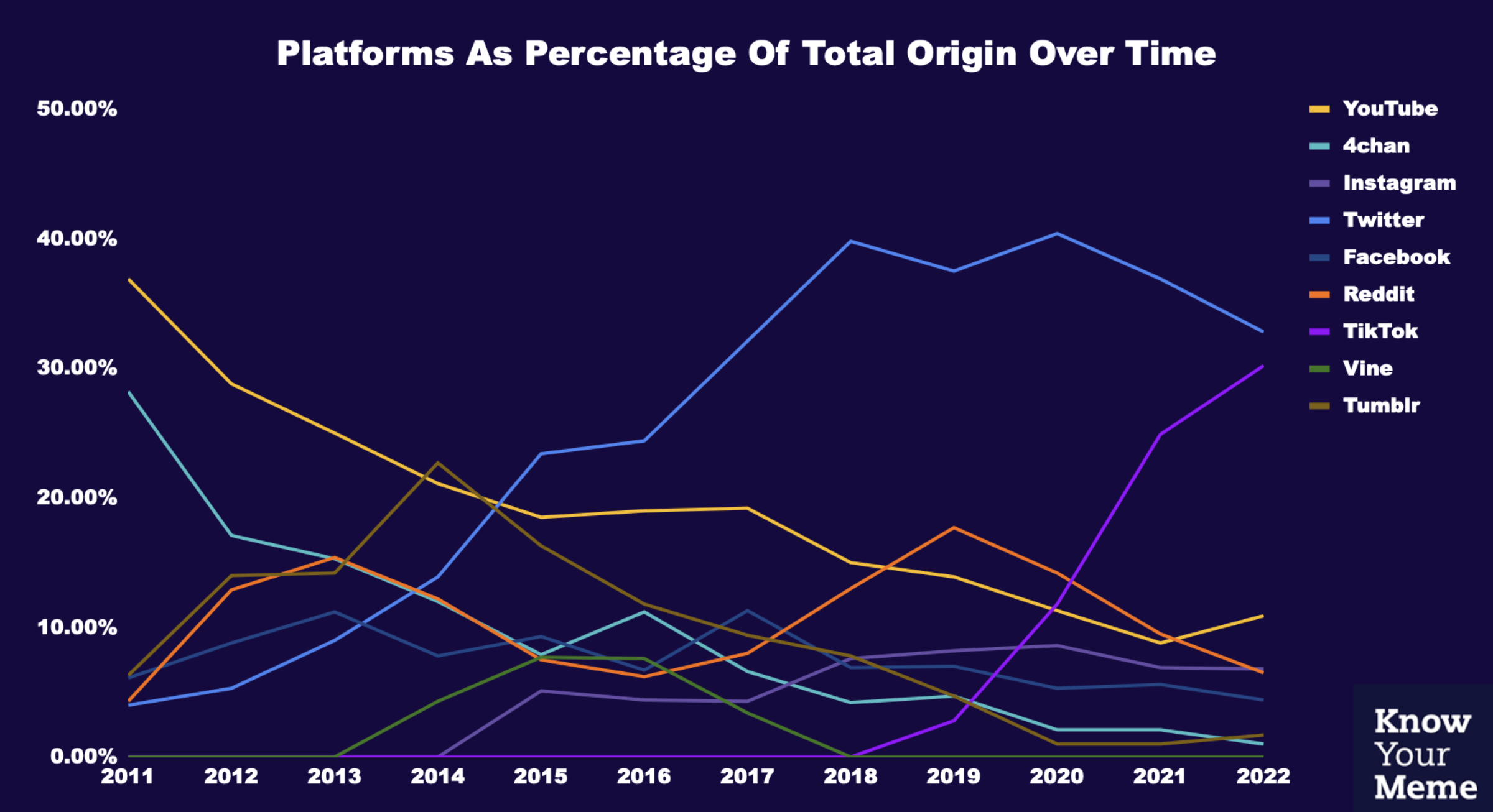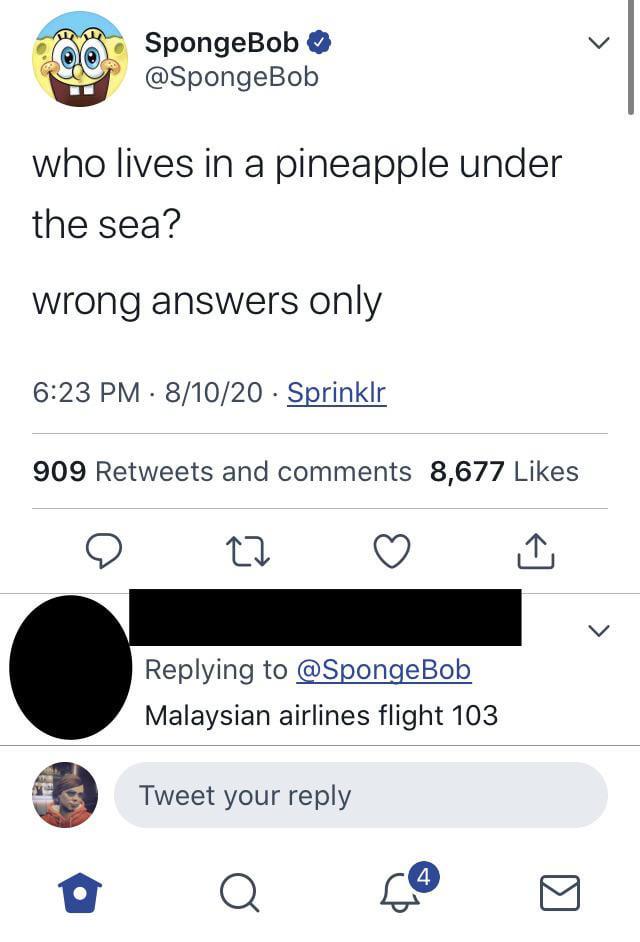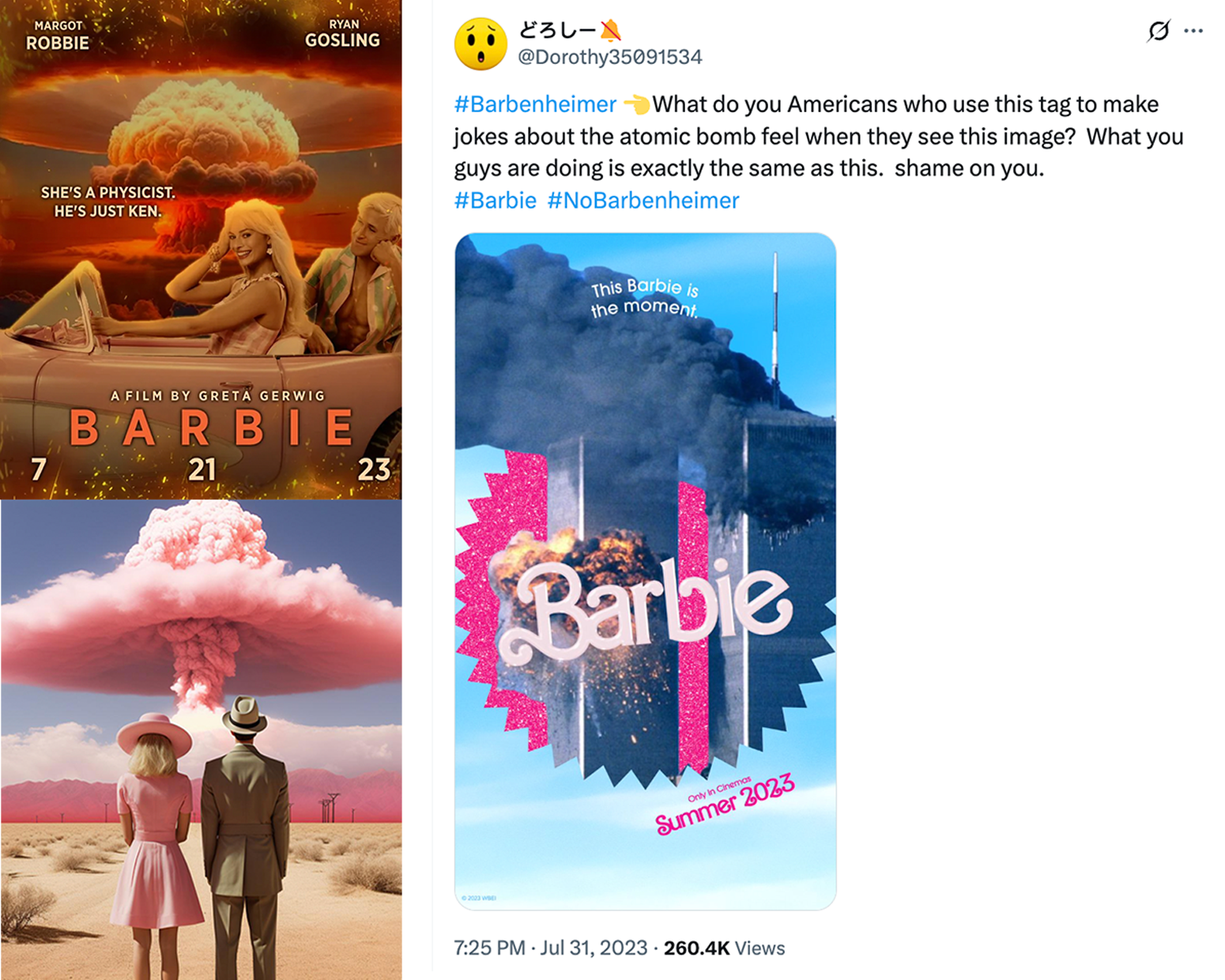Meme Therapy: Laughing Through the Pain
Join Geoy Kai Lin as she uncovers how youths ‘cope’ with the uncertainty of the world through memes
BY
Geoy Kai Lin
Deputy Editor
Hype Issue #61
Published on
May 16, 2025
Memes aren’t exactly news to the average internet user – they’re a staple of internet culture. Short, snappy, and witty, they find their way onto our social media feeds, often earning a quick chuckle without much thought. From “Distracted Boyfriend” to “Italian brainrot”, these memes are shared, remixed, and reposted at lightning speed, becoming part of our everyday digital language.
For many Gen Zs, memes go beyond just being funny or relatable. They have become a way to cope – a way to process the world’s messiness through humour. From international events like the Southern California wildfires and the Trump tariffs, to local inconveniences such as the East-West Line train breakdown and inflation, memes allow youths to poke fun at upsetting incidents. In doing so, they make heavy topics feel a little lighter, or at least more manageable.

During the LA fires, users turned a photo of a burning McDonald’s into a meme by overlaying it with the popular video game, Call of Duty’s loading screen, blending real-world disaster with dark humor. Photo taken from @FearBuck on X.
To understand this better, I spoke to two youths regarding their use of memes not just for entertainment, but as a coping mechanism in an increasingly volatile world.
Ivan Oh, 18, a final year Information Technology student at Nanyang Polytechnic, shared that he mainly discovers memes through Reddit and the popular YouTube channel Lessons In Meme Culture. “It covers trending memes almost every day,” he said. “After a busy day, I…check it out because I don’t really have the time to keep up with the constant flood of memes across all my social media platforms.”

As of 2022, most memes come from Tik Tok and X (formerly known as Twitter), with Tik Tok seeing a rapid surge in meme creation from 2019 onwards. Photo taken from Know Your Meme.
Ivan added that when his studies felt especially overwhelming during his secondary school days, looking at funny posts and jokes on the “SGExams” subreddit became a source of comfort. “It made me feel like I’m not alone,” he confessed. “It’s not just you, everyone’s going through such things as well. The memes made it easier to laugh off the stress, even if just for a while.”
Similarly, for Berwyn Han, 24, a business undergraduate at Nanyang Technological University, memes helped ease his frustration when he was stuck on the train during peak hour last year. He shared that the memes joking about the terrible transport system made his experience more bearable, as it “took the seriousness out of the actual event”.
So, why exactly do youths turn to memes when facing bad news or uncertainty?
Unpacking the “LOL”
In an interview with Teen Vogue, Jamie Cohen, a digital culture expert and assistant professor at CUNY Queens College, noted that with the increasingly widespread use of social media encouraging public processing of difficult events, users are communicating their feelings through graphical language and memes. “We’re posting through it, so to speak, as a coping mechanism to prevent hopelessness,” he said. “It’s doubtful that any meme posts will change the world, but they provide a respite against more traditional forms of media like TV news that are one-way and often feel heavier and difficult to process.”
Beyond the normalisation of using memes to express negative emotions online, memes also contribute to psychological compartmentalisation – a defence mechanism in which thoughts and feelings that seemingly conflict are kept separated from each other in the mind. In this way, memes can serve as a tool for deflecting or avoiding unresolved trauma and emotional discomfort.
Also in the interview, Joshua Klapow, a clinical psychologist, highlighted how the inherently filtered nature of social media encourages emotional distancing. “Because there are often little to no direct consequences (other than replies), social media is a way to be as raw as possible…to say what we think to the world, without having to look the world directly in the eye.”
The idea of emotional distancing resonates with Ivan, who views memes as a temporary distraction. “They’re just jokes, and sometimes they’re exaggerated or not based in reality,” he said. “In the end, the problem doesn’t solve itself – it’s only a temporary coping mechanism (in which) you have a short laugh and move on with life.”
Yet, this sense of emotional detachment can raise ethical concerns. When memes are made about serious events, they can come across as insensitive – especially when a specific group bears the brunt of the joke or when real emotional pain is involved. This raises an important question: where should we draw the line between humour and sensitivity?
LMAO…Within Reason
When asked about the recent viral TikTok featuring an NUS student “crashing out” in public, Mr Han admitted that while he found the clip “relatable” and even amusing, he was mindful that the deeper issue of deteriorating mental health shouldn’t be taken lightly. “There’s not really a clear line between humour and insensitivity,” he reflected. “Most of the time when you make a joke…it’s going to be at least a little insensitive.”
Mr Han suggested that memes referencing mental health could be made more responsible by including support resources or subtly integrating them into the content itself. “If you look at articles on Mothership or The Straits Times, anything about suicide or mental health usually links hotlines for IMH, Samaritans of Singapore, and others. So I think it’s okay to make a joke, but there should also be a way for people who relate to it to seek help.”
Similarly, Ivan noted the personal disconnect he felt when encountering memes that made light of the Malaysia Airlines Flight 370 (MH370) tragedy and the September 11 attacks (9/11). While he believed the creators likely had no intent to disrespect the lives lost, he acknowledged that such content inevitably downplays the gravity of the events and desensitises audiences, making it harder for affected families to grieve with dignity.

A meme referencing MH370 with a dark twist on the SpongeBob SquarePants cartoon. The gravity of the tragedy is often lost when such content is reduced to internet humour. Photo taken from @BodaciousFish1211 on Reddit.
According to a series of studies published by the American Psychological Association, people exposed to satirical humour often form more negative impressions of its targets than those who encounter direct criticism. Researchers noted that satire’s “damaging effect stems from its tendency to dehumanise its targets” – prompting viewers to see individuals as caricatures rather than as real people with genuine emotions. In this way, even seemingly “harmless” memes can desensitise audiences and diminish compassion for those affected.
This effect was strikingly evident during the surge of “Barbenheimer” memes that flooded social media two years ago, as anticipation built around the simultaneous release of Barbie and Oppenheimer. What began as a playful mashup quickly took a darker turn when users started pairing lighthearted Barbie imagery with references to the atomic bomb, the very weapon central to Oppenheimer. These memes sparked widespread backlash, particularly in Japan, where many viewed them as trivialising the devastating impact of nuclear warfare.
Japanese citizens slammed “Barbenheimer” content as “terrible,” criticising the images that combined mushroom clouds with smiling actors from the Barbie movie. This public outcry gave rise to the #NoBarbenheimer movement on social media, where users voiced their outrage over what they saw as a deeply insensitive trend.

From left to right: “Barbenheimer” memes referencing the atomic bomb’s mushroom cloud, and a protest post by a Japanese X user who edited Barbie elements onto a 9/11 image to highlight the trend’s insensitivity. Photos taken from X, edited by Geoy Kai Lin
“There’s always going to be a grey area with memes. However, if the humour comes at the cost of someone’s safety, privacy, or grief…that’s where the line should be drawn”, Ivan concluded. “In the end, it comes down to empathy and better judgment.”
The Last Laugh
As a bottom line, while memes help us laugh through the chaos – and for many youths, serve as a go-to way to cope with stress, sadness, or the absurdity of life – they can also cross the line, especially when they make light of real people’s pain or serious events. It comes down to using humour with heart. Joke about the moment, not the person. Laugh, but don’t lose sight of the impact. Memes can heal, but they shouldn’t harm.

Your passion for your subject matter shines through in every post. It’s clear that you genuinely care about sharing knowledge and making a positive impact on your readers. Kudos to you!
hızlı buyhacklink.com site buyhacklink.com https://www.jadekusadasi.com/
“Cloud startups automate scaling with Terraform – manage infrastructure as code.”
Smm Panel Scripti
Tur Scripti
This was beautiful Admin. Thank you for your reflections.
E-ticaret Scripti
Produsele arata exact ca in poze si calitatea e peste asteptari. Voi reveni cu siguranta!
Smm Panel Scripti
Smm Panel Scripti
Mi-a placut ca am putut plati in rate. O optiune utila pentru achizitii mai mari.
Materialele textile sunt de calitate superioara. Covoarele sunt exact ce-mi doream.
This was exactly what I was looking for. Very helpful post!
very informative articles or reviews at this time.
Nice post. I learn something totally new and challenging on websites
I like the efforts you have put in this, regards for all the great content.
Un site pe care l-as recomanda oricui isi doreste o casa cu stil.
149. Can’t decide on the look of general stone/marble use! Saw some great examples at [sangemarmarmarble.com]. Does marble really stain easily?
Transportul a durat mai mult decat era estimat, dar pernele decorative merita asteptarea.
yapay zeka booth,video360 booth, yerinden mirror booth
Kes – Mak Bahçe Aksesuarları ve Yedek Parça | Malatya kesmak, kes-mak malatya, malatya kes-mak, motorlu testere yedek parça,Malatya Stihl Bayi, benzinli testere yedek parça, testere zinciri, ağaç kesme pala, klavuz, elektronik bobin, hava filtresi, stihl malatya bayi, stihlmalatya,malatyastihl, stihl servisi, malatya stihl servis, malatya testere,malatyastihlbayi, stihl malatya, malatya stihl, stihl bayisi malatya, Hekimhan stihl bayi, malatya testere bayisi, malatya stihl servis, stihl malatya servis,
Van Haberleri tarafsız haber yayıncılığı anlayışıyla doğru ve güvenilir bilgilere ulaşmanızı sağlar. Van Sesi Gazetesi yıllardır Van ve çevresinde güvenilir haberleri sunma konusundaki kararlılığıyla bilinir. Van Olay, Van Gündem, Van Haber, Van haberleri, Gündem haberleri, van erciş, van gevaş, van edremit En doğru ve En tarafsız haber sayfanız
Altıntaş Makina bingöl stihl, stihl bingöl, oleomac bingöl, bingöl felco, çapa makinası, altıntaş makina </a Yusuf Elaltuntaş.
Mersin Satılık Arsa
Mersin Emlak
Mersin Kiralık Daire
Mersin Satılık Konut
Bu yazıda yer alan güvenilir bahis siteleri ile ilgili içerikler her zaman ilgi çekici.
104. Obsessed with outdoor flooring! Found amazing ideas on [sangemarmarmarble.com]. Does marble really stain easily?
Buy Hacklink buyhacklink.com buyhacklink.com https://www.kusadasiteksex.com/
179. Researching general stone/marble use! Found amazing ideas on [sangemarmarmarble.com]. Is it true that marble needs sealing every year?
Grandview | Kıbrıs emlak fırsatları , satılık daire Kıbrıs , kiralık daire Kıbrıs , Kıbrıs satılık villa, Kıbrıs yatırım danışmanlığı, Kıbrıs satış ve kiralama hizmetleri
buy seo buyhacklink.com seo buyhacklink.com https://kusadasi-cptlxx.tumblr.com/
Bu güzel bilgilendirmeler için teşekkür ederim.
There is definately a lot to find out about this subject. I like all the points you made
Selam, uygun fiyatlı OpenCart hosting buldum, e-ticaret sitesi kurmak isteyenlere birebir!
Hallo! Ich habe einen günstigen VPS gefunden – sehr empfehlenswert für alle.
Mersin Emlak
Mersin Satılık Konut
Mersin Satılık Villa
“Startups in robotics use our real-time cloud – process sensor data with sub-ms latency.”
Mersin Kiralık Daire
Mersin Satılık Villa
Mersin Emlak
İnstagram Keşfet Al
“Startups in quantum optics use HPC – simulate photonic circuits for computing.”
Mersin Kiralık Daire
Mersin Satılık Konut
Grandview | Kıbrıs emlak fırsatları , satılık daire Kıbrıs , kiralık daire Kıbrıs , Kıbrıs satılık villa, Kıbrıs yatırım danışmanlığı, Kıbrıs satış ve kiralama hizmetleri
İnstagram Takipçi Satın Al
web tasarım, web yazılım, seo yönetimi, seo fiyatı, backlink analizi, backlink fiyat, Google ads yönetimi
sell hacklinks buyhacklink.com 1 day seo buyhacklink.com https://www.jadekusadasi.com/
Follow Buy Hacklink buyhacklink.com en ucuz hacklink buyhacklink.com https://www.kusadasiteksex.com/
personal Hacklink Panel buyhacklink.com hacklink bürosu buyhacklink.com https://www.jadekusadasi.com/
private hacklink buyhacklink.com pa Da yuksek hacklink buyhacklink.com https://www.kusadasiteksex.com/
Kendi adıma araştırırken öğrendiğim güvenilir bahis siteleri listelerini kontrol etmekte fayda var.
Altıntaş Makina bingöl stihl, stihl bingöl, oleomac bingöl, bingöl felco, çapa makinası, altıntaş makina </a Yusuf Elaltuntaş.
Mersin Satılık Konut
Mersin Satılık Arsa
Win Gayrimenkul
sitenizi takip ediyorum makaleler Faydalı bilgiler için teşekkürler
Tiktok beğeni satın al
Beğeni Satın Al
İnstagram Takipçi Satın Al
Hello Neat post Theres an issue together with your site in internet explorer would check this IE still is the marketplace chief and a large element of other folks will leave out your magnificent writing due to this problem
Its like you read my mind You appear to know a lot about this like you wrote the book in it or something I think that you could do with some pics to drive the message home a little bit but instead of that this is fantastic blog An excellent read I will certainly be back
Just wish to say your article is as surprising. The clearness in your post is just cool and i could assume you’re an expert on this subject. Fine with your permission allow me to grab your RSS feed to keep updated with forthcoming post. Thanks a million and please keep up the enjoyable work.